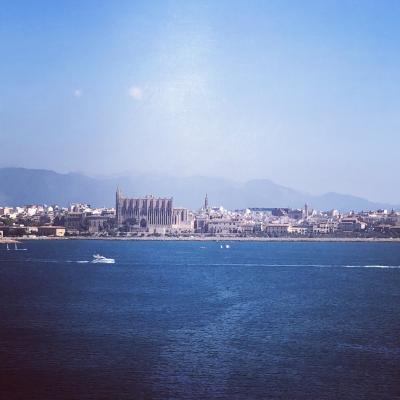What environmental conditions in Mallorca make carob trees well-suited to growing there?
Similar Topics
mallorca mediterranean climate
carob tree growth
warm dry environments
drought-resistant trees
calcareous soil
limestone-rich soils
coastal microclimate
deep root systems
Mallorca's Mediterranean climate provides ideal conditions for the growth of carob trees, which thrive in warm, dry environments with plenty of sunshine. The island enjoys long, hot summers with minimal rainfall, followed by mild winters, creating a dependable seasonal cycle for these hardy trees. Carob trees are well adapted to withstand drought, making them especially suited to the relatively low and sporadic precipitation typical of Mallorca’s landscape.
The soil conditions on the island also contribute to the successful cultivation of carob trees. Mallorca's terrain is predominantly calcareous and well-drained, characteristics that prevent waterlogging and root rot, which carob trees are particularly sensitive to. These trees prefer rocky, limestone-rich soils, which are common throughout Mallorca’s hills and coastal areas. Additionally, Mallorca’s moderate elevation and coastal proximity offer a beneficial microclimate with stable temperatures and protection from harsh winds.
Importantly, carob trees have deep root systems that allow them to access underground moisture during the dry months, giving them a natural advantage in the island’s sometimes arid conditions. Their ability to grow resiliently in poor soils where many other trees struggle makes them a long-standing part of Mallorca’s agricultural heritage. This combination of climate, soil, and natural drought resistance makes the carob tree a well-suited species for Mallorca, contributing both environmentally and economically to the island's rural landscape.
The soil conditions on the island also contribute to the successful cultivation of carob trees. Mallorca's terrain is predominantly calcareous and well-drained, characteristics that prevent waterlogging and root rot, which carob trees are particularly sensitive to. These trees prefer rocky, limestone-rich soils, which are common throughout Mallorca’s hills and coastal areas. Additionally, Mallorca’s moderate elevation and coastal proximity offer a beneficial microclimate with stable temperatures and protection from harsh winds.
Importantly, carob trees have deep root systems that allow them to access underground moisture during the dry months, giving them a natural advantage in the island’s sometimes arid conditions. Their ability to grow resiliently in poor soils where many other trees struggle makes them a long-standing part of Mallorca’s agricultural heritage. This combination of climate, soil, and natural drought resistance makes the carob tree a well-suited species for Mallorca, contributing both environmentally and economically to the island's rural landscape.
🧩 Related Questions
Related Question
What are the best times of year to visit the Aleppo pine forests in Mallorca for optimal hiking conditions?
Related Question
What ingredients are commonly paired with pork in Mallorca’s signature dishes?
Related Question
What role does mental health play in the experiences of female athletes in Mallorca?
